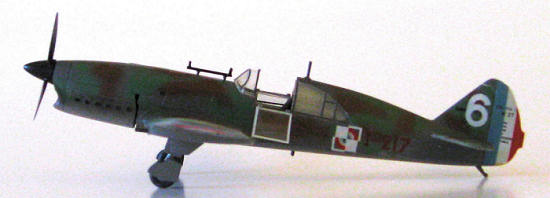
Heller 1/72 Caudron C.714
| KIT #: | ? |
| PRICE: | A dollar or so in 1970 |
| DECALS: | One option |
| REVIEWER: | Tom Draper |
| NOTES: | Carpena decals 72.15 used |

| HISTORY |
Based on the Caudron racers of the
late ‘30’s, the Caudron C.714 was an attempt to make a lightweight fighter
out of non-strategic materials that could compete with modern German combat
aircraft.
However, the modest engine p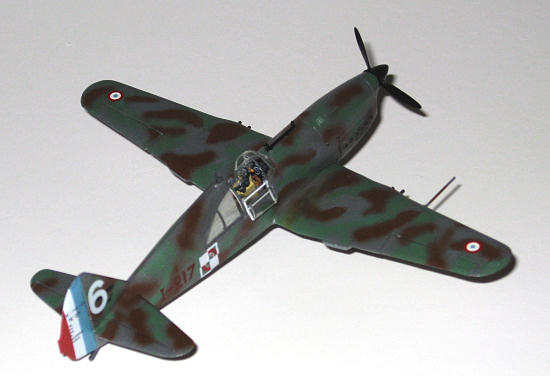 ower
that could be installed and the four .30 caliber machine guns that could be
carried made the Caudron an ineffective weapon.
After a few aircraft were manufactured, C.714
production was halted.
The aircraft produced found themselves flown in
combat by free Polish pilots more brave than successful.
ower
that could be installed and the four .30 caliber machine guns that could be
carried made the Caudron an ineffective weapon.
After a few aircraft were manufactured, C.714
production was halted.
The aircraft produced found themselves flown in
combat by free Polish pilots more brave than successful.
| THE KIT |
The Heller kit is typical of the first wave of Heller models produced in the early ‘70’s in the manly and correct scale of 1/72. Well molded for their time, with rich detail on the outside, but lacking in interior detail, the Heller kits can be turned into excellent replicas by those who still remember how to experience the fun of modeling by adding their own skill to a good, but basic kit.
| CONSTRUCTION |
Armed with French modeling research materials and the excellent French Aircraft From 1939 to 1942 Volume 1, published by Histoire & Collections, I started in. The photos show the changes that were made to the kit before painting.
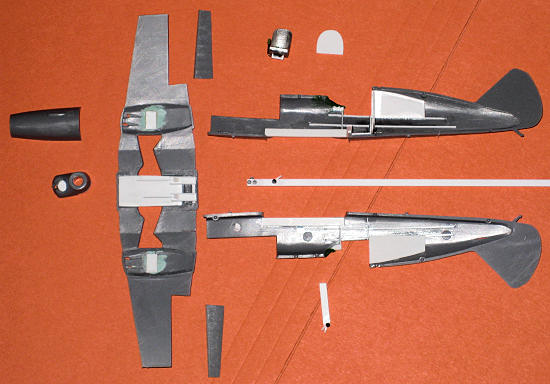 The
ailerons were removed and improved
The
ailerons were removed and improved 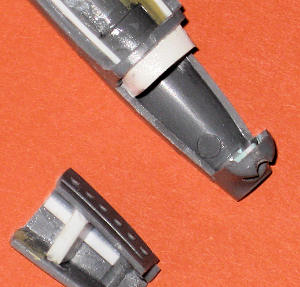 ults.
ults.
| COLORS & MARKINGS |
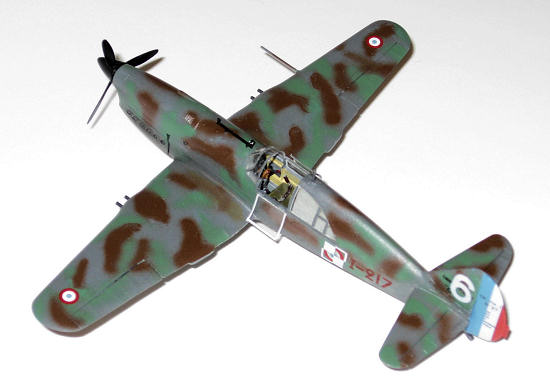 Construction
continued until the aircraft was ready to paint.
The C.714 was painted with a Pasache SA single
action air brush in the random French manor using their standard four color
scheme as shown in the
French Aircraft… book.
I used the
Xtracolor gloss French colors plus Humbrol Kaki.
Markings came from the Decals Carpena sheet 72.15 “Bataille
de France” depicting an aircraft assigned to the Free Polish squadron flying
this aircraft. (The kit decals were a simplified version of these markings,
but were too far gone to use).
The Carpena roundels were unsatisfactory (as they
all are, regardless of sheet) and were replaced by ancient ABT roundels,
which worked fine after more than 25 years in the decal file.
I decided to depict the Caudron early in its life,
when it carried a distinct white Polish design painted over the French
roundel which was dulled by overpainting with Kaki colors.
The decals omit the underwing buzz number, which I
created using Modeldecal British underwing serial numbers.
Construction
continued until the aircraft was ready to paint.
The C.714 was painted with a Pasache SA single
action air brush in the random French manor using their standard four color
scheme as shown in the
French Aircraft… book.
I used the
Xtracolor gloss French colors plus Humbrol Kaki.
Markings came from the Decals Carpena sheet 72.15 “Bataille
de France” depicting an aircraft assigned to the Free Polish squadron flying
this aircraft. (The kit decals were a simplified version of these markings,
but were too far gone to use).
The Carpena roundels were unsatisfactory (as they
all are, regardless of sheet) and were replaced by ancient ABT roundels,
which worked fine after more than 25 years in the decal file.
I decided to depict the Caudron early in its life,
when it carried a distinct white Polish design painted over the French
roundel which was dulled by overpainting with Kaki colors.
The decals omit the underwing buzz number, which I
created using Modeldecal British underwing serial numbers.
| FINAL CONSTRUCTION |
Next the canopy pieces were decaled and added to the fuselage. The whole thing is asymmetrical and hangs all over the plane. The Caudron wasn’t that small compared to other early war fighters, but it has its own virtually level sit.
| CONCLUSIONS |
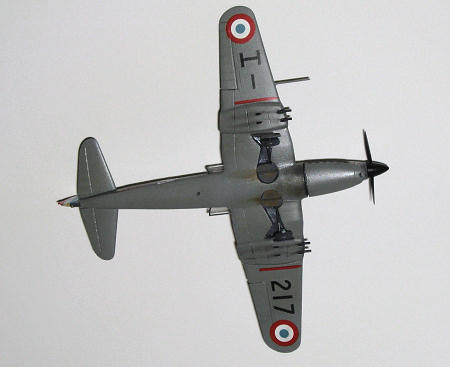 A
very interesting airplane and a very interesting build.
These older Heller kits were the Tamiya kits of
their day and still can be used to make an outstanding model if the modeler
is willing to put in some extra work.
A
very interesting airplane and a very interesting build.
These older Heller kits were the Tamiya kits of
their day and still can be used to make an outstanding model if the modeler
is willing to put in some extra work.
September 2008
If you would like your product reviewed fairly and quickly, please contact me or see other details in the Note to Contributors.